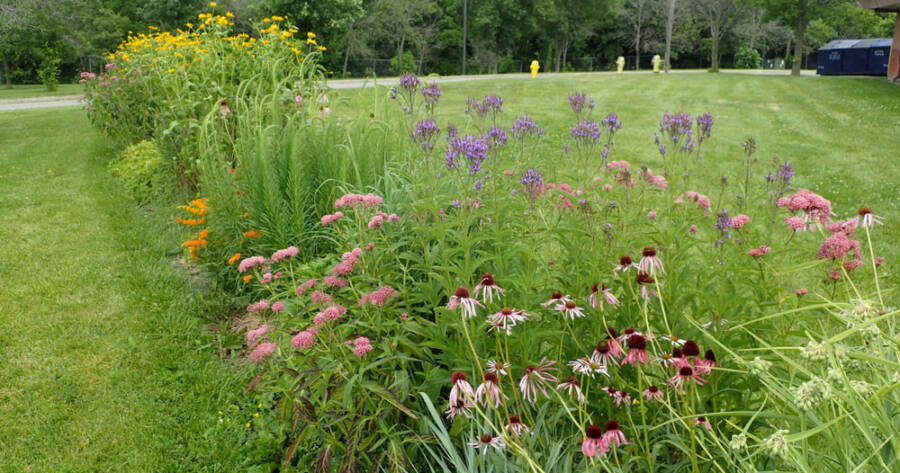Creating a native plant garden is one of the simplest ways to bring beauty and balance to your yard while cutting back on upkeep. Native plants thrive naturally in your local soil and climate, meaning less watering, fewer chemicals, and minimal care once established. For homeowners across the United States, they also attract pollinators and improve biodiversity. With some thoughtful planning and a few weekends of work, you can build a low-maintenance garden that practically takes care of itself.
Step 1: Understand Your Local Ecosystem
Before planting, learn what plants are native to your region. The U.S. is divided into different ecological zones, and what thrives in Arizona won’t necessarily succeed in Maine. Local native plant societies, botanical gardens, or county extension offices often have regional lists that highlight which species naturally belong in your area.
Pay attention to your yard’s conditions—sun exposure, soil texture, and drainage. Some native plants prefer dry, sandy soil while others grow best in shady, moist spots. Matching the right plant to the right place is the foundation of a healthy, low-maintenance garden.
Step 2: Prepare the Soil and Layout
Once you know your region’s suitable plants, plan how you want your garden to look. Sketch a simple layout, grouping plants with similar water and sunlight needs together. This reduces stress on plants and simplifies future care.
Before planting, remove any invasive weeds or grass. A simple way to do this is to cover the area with cardboard or newspaper for a few weeks, which smothers existing growth without chemicals. After clearing the ground, loosen the soil with a rake or shovel. Native plants usually don’t need heavy soil amendments, but you can mix in compost if the ground is compacted or depleted.
Step 3: Choose the Right Native Plants
When selecting plants, focus on variety. A mix of grasses, flowering perennials, and shrubs will keep the garden visually interesting through all seasons. For example, native prairie grasses like little bluestem or switchgrass offer texture and movement, while wildflowers such as black-eyed Susans and coneflowers provide color and attract pollinators.
If your region has dry summers, look for drought-tolerant species. If you live in a wetter area, select moisture-loving plants like ferns or swamp milkweed. Aim for plants that bloom at different times of the year so your garden remains lively from spring to fall.
Step 4: Plant Thoughtfully and Water Wisely
Plant in spring or early fall, when temperatures are mild and roots have time to establish before harsh weather. Dig holes just deep enough for each root ball and space plants according to their mature size. Crowding might look full at first but will lead to competition and higher maintenance later.
Water deeply right after planting, then continue watering every few days until the plants take root. After the first growing season, most native species will need very little supplemental water. In drought-prone regions, consider using drip irrigation or soaker hoses to target water directly to the soil without waste.
Step 5: Add Mulch and Natural Borders
Mulch helps maintain moisture, prevents weeds, and stabilizes soil temperature. Use natural materials like shredded bark, leaf litter, or pine straw. Spread a two- to three-inch layer around plants, keeping it a few inches away from stems to prevent rot.
You can also define paths or edges with rocks, logs, or low-growing groundcovers. This keeps the garden looking organized while giving beneficial insects and small wildlife safe habitats.
Step 6: Maintain with a Light Touch
The beauty of a native garden is how little care it requires once established. Instead of frequent mowing, trimming, or fertilizing, your main tasks will be seasonal observation. Remove any invasive species that sneak in and trim back dead stems in late winter or early spring.
For most of the year, let leaves and plant debris remain where they fall—they provide natural mulch and shelter for pollinators. Over time, your garden will form its own balanced ecosystem that keeps weeds and pests in check without chemical help.
Step 7: Enjoy the Results and Keep Learning
As your garden matures, you’ll notice changes in wildlife activity. Birds, butterflies, and native bees often appear within weeks of planting. Observe which plants thrive and which struggle—gardening with natives is an ongoing learning process. You can always add new species or expand the area once you see how the environment responds.
A Garden That Gives Back
A native plant garden isn’t just a personal project—it’s a small step toward restoring local habitats and using resources responsibly. By choosing plants that belong in your region, you create a landscape that conserves water, resists pests, and sustains itself with minimal care.
The result is a yard that feels alive year-round, supports the environment, and saves you time and effort. With patience and the right approach, low-maintenance gardening becomes not just possible, but deeply rewarding.

